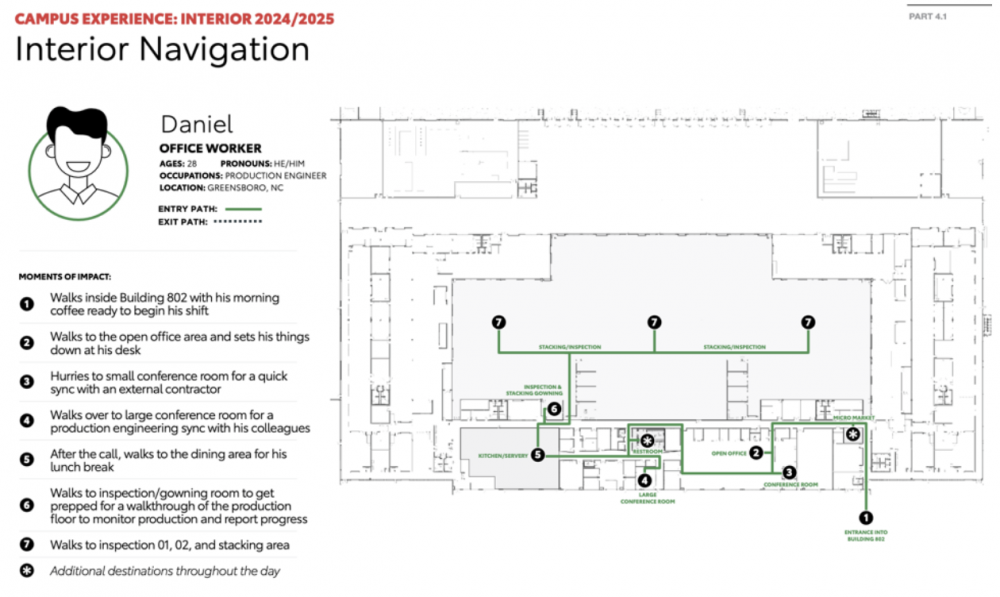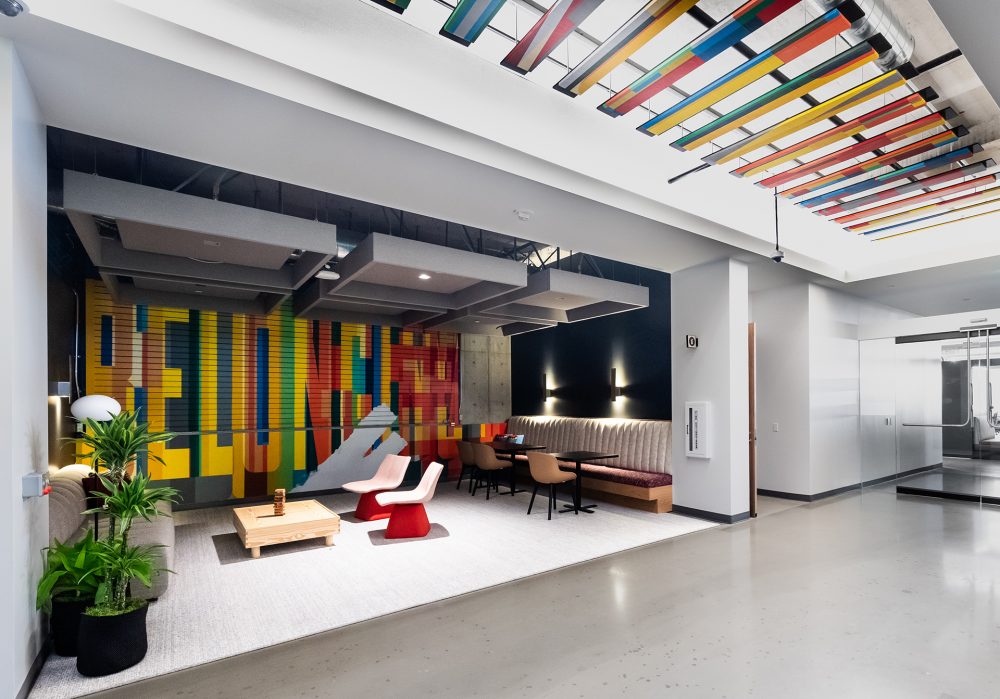3D Identity‘s Bob Bangham draws inspiration from UI/UX design principles to create fun, intentional and experiential workplaces.
Digital tools have reshaped our lives, evolving from clunky systems only experts could use to seamless, engaging experiences that anyone can enjoy. Today, using an app or website isn’t just about what it does—it’s about how it makes us feel and how effortlessly it guides us. But have we given the same care and attention to the places where we spend our days—our workplaces?
By drawing from user interface (UI) and user experience (UX) design principles, we can turn ordinary workplaces into dynamic environments that invite creativity, collaboration, and well-being.
With a touch of storytelling and intentional design, the office can become a place where you genuinely want to be—just like your favorite digital experience.
If you’re familiar with the game Minecraft, you’ll recognize how it leverages creativity, collaboration, and exploration through the building and shaping of its world block by block. Similarly, giving employees the freedom to adapt and mold their space to fit their needs fosters these same principles.
Designing Spaces That Feel Like Home
The magic of great UI/UX design lies in understanding users—their needs, behaviors, and what keeps them engaged. The same philosophy can transform a workspace. Before the first wall is built, it’s crucial to understand who will use the space and how they’ll thrive in it. Are they creative minds looking for inspiration in every corner, or deep thinkers who need a calm refuge?
By embracing a human-centered design approach, we can craft spaces that feel like a natural extension of the people who use them—similar to how a well-designed app anticipates user needs. Cozy lounge areas, vibrant collaborative zones, and pockets of quiet focus blend together to make an office feel intuitive and inviting. It’s about creating a space that feels just right, like a perfectly designed interface that’s easy to navigate.

Designing for Flow, Not Just Function
In digital design, journey mapping ensures users never feel lost—whether they’re browsing a store, booking a trip, or scrolling through a social feed. Now, imagine applying that same thinking to the workplace. Picture the flow of an employee’s day: their first steps through the door, a stop at the coffee bar, and smooth transitions between focused work areas and collaborative spaces.
Just as journey maps in UI/UX define a seamless user path, the physical design of an office should guide people naturally through their day. It’s not just about placing furniture; it’s about creating an experience where every movement feels intentional and every space is purposefully designed. When done right, moving through an office can feel as smooth as navigating a well-thought-out app.

Making Navigation a Breeze with Visual Cues
 Just as digital interfaces use visual hierarchy to guide users through a screen, physical spaces can use design elements to make navigation intuitive and delightful. Think of a website’s navigation bar—it’s there to direct users without overwhelming them. In a workspace, this might look like color-coded zones, clear signage, and creative wayfinding that helps people understand the space without needing to ask for directions.
Just as digital interfaces use visual hierarchy to guide users through a screen, physical spaces can use design elements to make navigation intuitive and delightful. Think of a website’s navigation bar—it’s there to direct users without overwhelming them. In a workspace, this might look like color-coded zones, clear signage, and creative wayfinding that helps people understand the space without needing to ask for directions.
Imagine walking into a space where every turn offers a little joy—an inspiring mural here, a playful sign there. It’s about guiding people through their day in a way that feels natural, turning the office into a place you enjoy exploring, much like a well-designed app encourages you to keep clicking through. With thoughtful design, wayfinding becomes more than just practical—it becomes an opportunity for surprise and delight.

Telling Your Brand’s Story in Every Detail
The best UI/UX designs don’t just function—they create a connection through storytelling. This philosophy can also shape physical spaces. Imagine an office that doesn’t just look modern but feels like it’s telling your company’s story at every turn. From materials and textures to colors and art, every detail can reflect your brand’s values and personality.
In the same way a brand’s story can come to life through a website’s design, a workspace can be a living, breathing extension of your brand. This creates a space where employees feel a sense of belonging and pride, and visitors leave with a memorable impression. When every corner of a workspace resonates with the spirit of your brand, the office becomes a place where people feel inspired to connect, create, and thrive.

Creating the Ultimate Workplace Experience
When we apply the principles of user experience to the design of physical spaces, we have the potential to revolutionize how we think about the workplace. The office shouldn’t just be a place to clock in; it should be a space where experiences unfold, ideas come to life, and every interaction feels thoughtfully crafted.
When a space is designed to inspire and engage, it’s more than just an office—it’s a place you love to be. Just like the best apps or websites transform how people feel and interact, a well-designed office can elevate the everyday work experience, making every day a little more meaningful.

